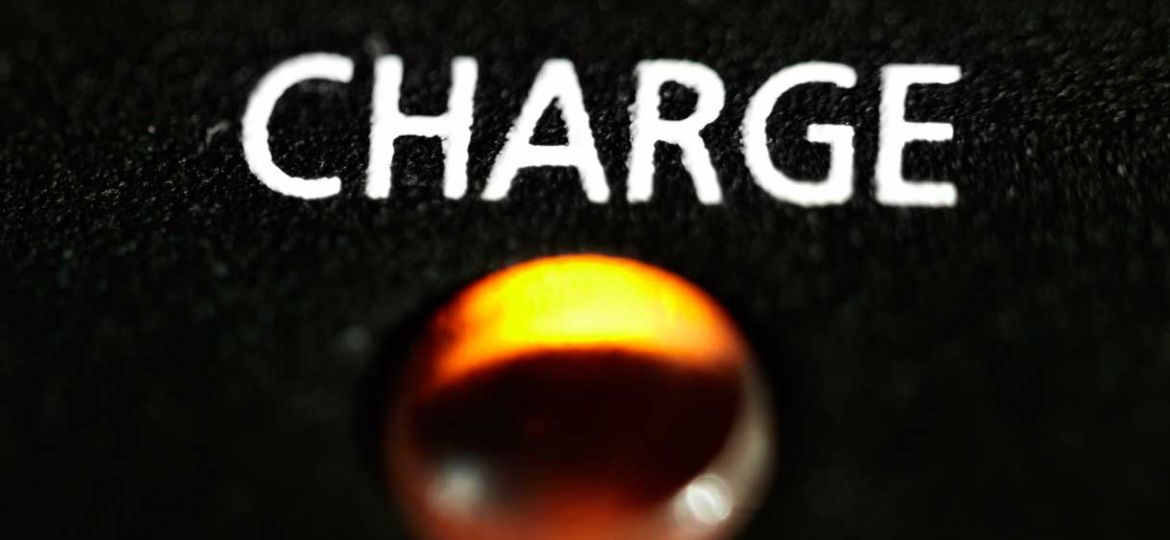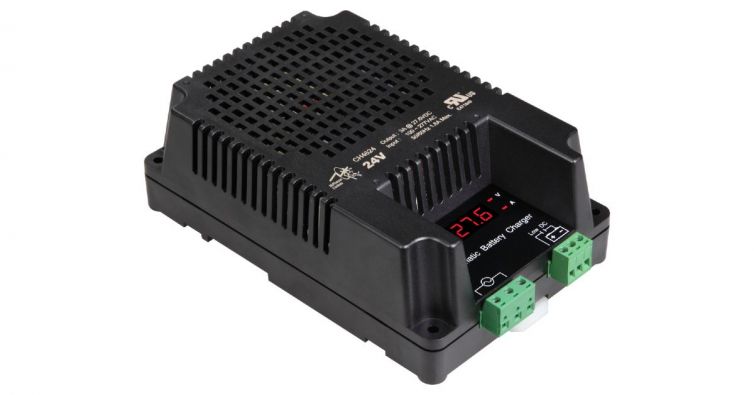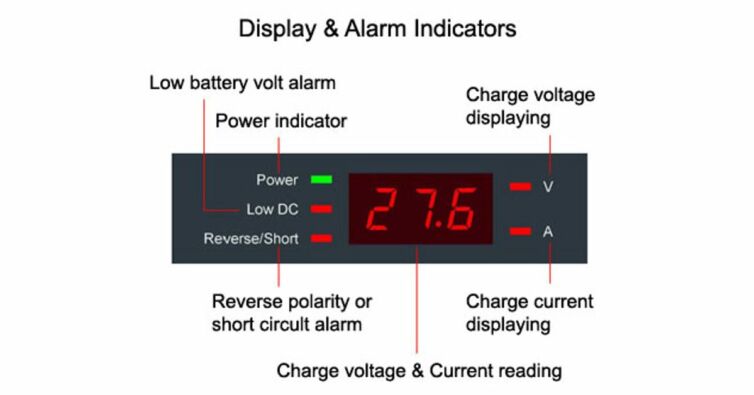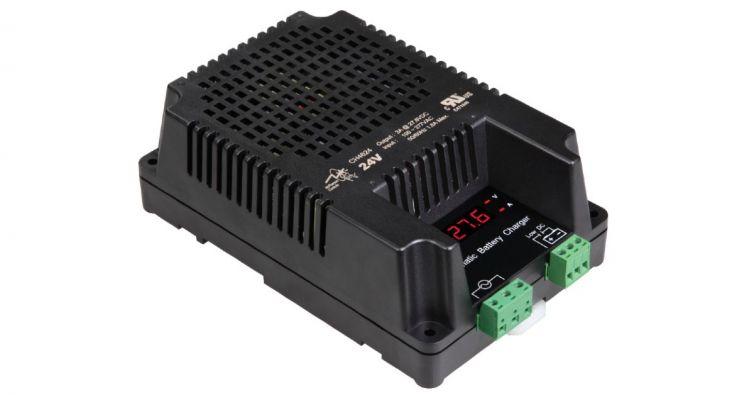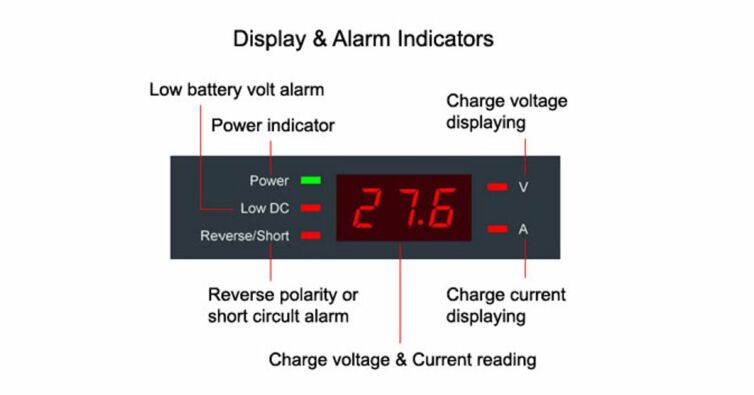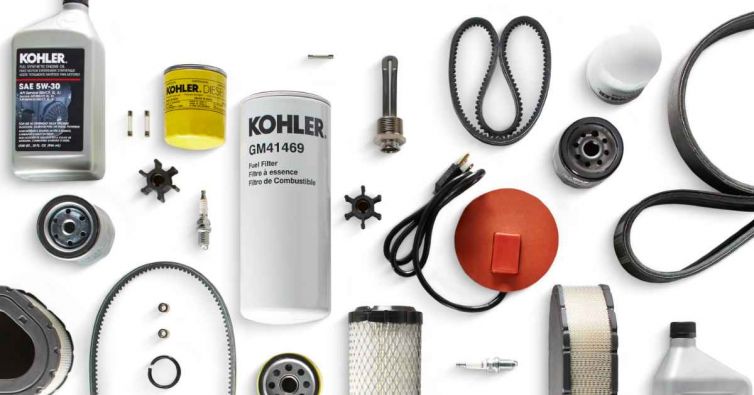This post will provide you with a comprehensive understanding of generator battery chargers, what it is, function, types, key features, selection factors, benefits, usage tips, troubleshooting, maintenance and advanced features.
We invite you to read below!
A generator battery charger is a device designed to recharge or maintain the charge of a generator’s battery. It is typically used in standby generators or portable generators where the battery needs to be constantly charged for backup power purposes.
The purpose of a generator battery charger is to ensure that the generator’s battery stays fully charged and ready for use whenever needed. It provides a steady flow of power to the battery, replenishing the charge lost during the generator’s operation or any self-discharge over time. This helps to extend the lifespan of the battery and ensures that the generator will start reliably when required.
Often, generator battery chargers are designed to automatically adjust the charging voltage or current based on the battery’s condition, preventing overcharging or undercharging. They may also include safety features such as voltage monitoring, short-circuit protection, and reverse polarity protection to prevent damage to the batteries and generator system.
Overall, the generator battery charger plays a vital role in maintaining the reliability and performance of the generator by keeping its battery in optimal condition.
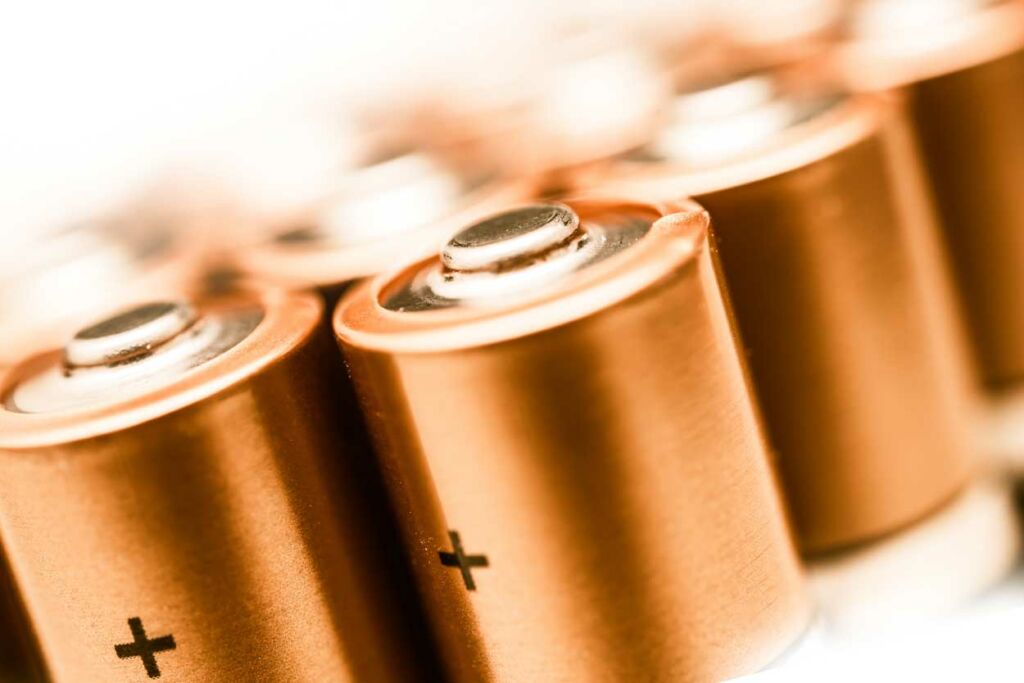
Why a reliable generator battery charger is crucial for your power generator?
A reliable generator battery charger is crucial for several reasons:
1. Ensures readiness: A generator is used as a backup power source during emergencies or power outages. A reliable battery charger ensures that the generator’s battery is always fully charged and ready for use. This guarantees that the generator will start promptly without any issues when needed, providing uninterrupted power supply.
2. Extends battery lifespan: Overcharging or undercharging a battery can significantly reduce its lifespan. A reliable battery charger is designed to deliver an appropriate charging voltage and current, preventing damage caused by overcharging or undercharging. This extends the battery’s lifespan, reducing the need for frequent battery replacements and saving costs in the long run.
3. Prevents battery self-discharge: Batteries can lose their charge over time due to self-discharge. A reliable battery charger continuously monitors the battery’s charge level and provides a constant flow of power to compensate for self-discharge. This ensures that the generator’s battery remains fully charged, even during periods of inactivity.
4. Safeguards against battery damage: Some battery chargers come equipped with safety features such as voltage monitoring, short-circuit protection, and reverse polarity protection. These features help prevent damage to the battery and the generator system. For example, voltage monitoring ensures that the charging voltage remains within safe limits, protecting the battery from damage due to overvoltage.
5. Reliability in challenging conditions: A reliable generator battery charger is designed to work efficiently even in challenging conditions such as extreme temperatures, voltage fluctuations, or power surges. It operates reliably and consistently, ensuring that the battery is charged properly regardless of the external circumstances.
Understanding Batteries types for Power Generators
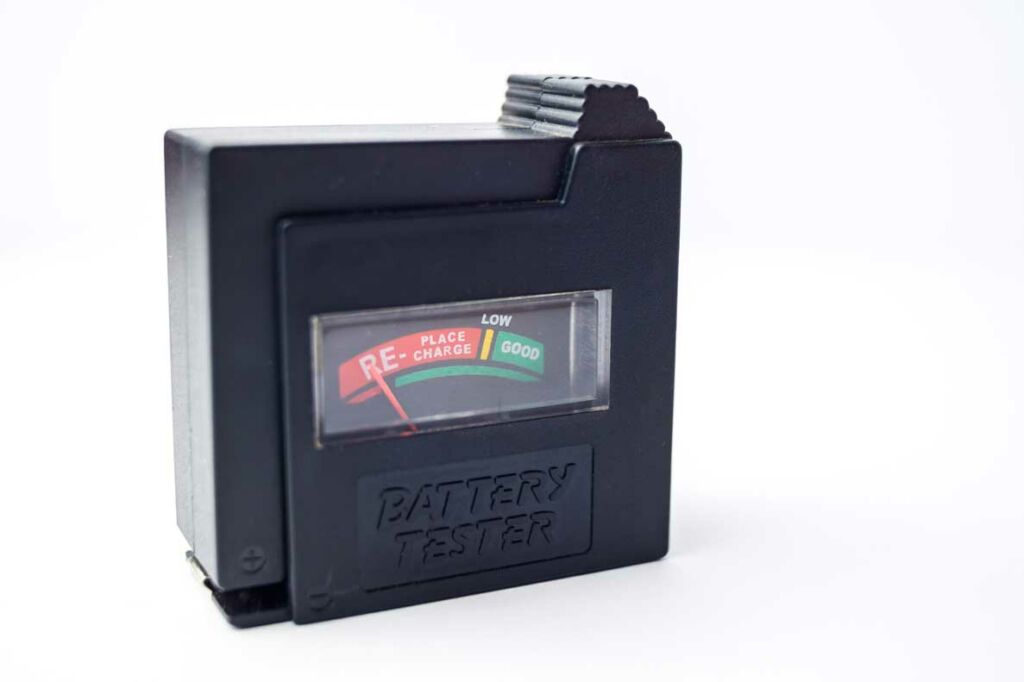
Power generators can use various types of batteries, depending on their specific needs and requirements. The most common types of batteries used in power generators include:
1. Lead-Acid Batteries: Lead-acid batteries are one of the oldest and most widely used types of batteries. They are known for their affordability, reliability, and ability to deliver high current output. They come in two main variants: flooded lead-acid (FLA) and sealed lead-acid (SLA) batteries. FLA batteries require periodic maintenance, including checking fluid levels and ensuring proper ventilation, while SLA batteries are maintenance-free and sealed.
2. Lithium-Ion Batteries: Lithium-ion batteries have gained popularity in recent years due to their high energy density, lightweight construction, and longer lifespan compared to traditional lead-acid batteries. They are more expensive but offer higher efficiency, faster charging times, and a higher cycle life. Lithium-ion batteries are commonly used in portable and inverter generators.
3. Nickel-Cadmium Batteries: Nickel-cadmium (NiCd) batteries have a long history of usage in various applications, including power generators. They are known for their excellent performance in extreme temperatures, high discharge rates, and long cycle life. However, they are less commonly used in power generators today due to environmental concerns related to cadmium, as well as the development and availability of newer battery technologies.
4. Nickel-Metal Hydride Batteries: Nickel-metal hydride (NiMH) batteries are an alternative to NiCd batteries. They offer advantages such as higher energy density, no memory effect, and reduced environmental impact. However, they are less commonly used in power generators compared to lead-acid or lithium-ion batteries.
5. Gel Batteries: Gel batteries, also known as gel-cell or gel-electrolyte batteries, are a type of lead-acid battery that use a gel-like electrolyte instead of liquid. The gel electrolyte makes the battery spill-proof, vibration-resistant, and suitable for applications where maintenance is challenging. Gel batteries are commonly used in standby or backup power applications where reliability and long maintenance-free periods are essential.
When selecting the type of battery for a power generator, factors such as the required capacity, discharge rate, operating temperature range, maintenance needs, and cost need to be considered. Each battery type has its own strengths and limitations, and the choice depends on the specific needs and priorities of the generator system.
SKU: CH4612
Contact us to confirm product availability before adding to cart.
SKU: GM117788
Contact us to confirm product availability before adding to cart.
The Need for a Generator Battery Charger
A power generator needs a generator battery charger for several reasons:
1. Battery Maintenance: The battery in a power generator is essential for starting the generator. It provides the initial power needed to start the engine and provides backup power during operation. A generator battery charger helps maintain the battery’s charge, preventing it from discharging over time and ensuring it is always ready for use.
2. Extended Standby Use: Standby power generators are often kept idle for extended periods until needed during power outages or emergencies. During this idle time, batteries can self-discharge and lose their charge. A generator battery charger keeps the battery consistently charged, preventing self-discharge and ensuring the generator is ready to start when needed.
3. Backup Power Reliability: In situations where the power goes out, having a reliable backup power source is critical. A generator battery charger ensures that the generator’s battery is fully charged, allowing the generator to start promptly and provide uninterrupted backup power. This is especially important in critical applications such as hospitals, data centers, or security systems where power cannot afford to be compromised.
4. Battery Longevity: Proper charging and maintenance of the battery can help extend its lifespan. A generator battery charger provides the optimal charging voltage and current, preventing overcharging or undercharging that can lead to premature battery failure. By keeping the battery properly charged, a generator battery charger helps maximize the battery’s lifespan, reducing the need for frequent replacements and associated costs.
5. Protection Against Battery Damage: Overcharging or undercharging a battery can lead to irreversible damage, such as sulfation or plate degradation. A generator battery charger often includes built-in safety features such as voltage monitoring, short-circuit protection, and reverse polarity protection. These features ensure that the battery is charged safely and prevent any potential damage to the battery or the generator system.
6. Adaptability to Charging Needs: Generator battery chargers can be designed to suit different types of batteries, such as lead-acid, lithium-ion, or gel batteries. They can also be designed to offer various charging modes, such as trickle charge, fast charge, or maintenance charge. This adaptability allows the generator battery charger to meet the specific charging needs of the generator’s battery, ensuring efficient charging and optimal battery performance.
Overall, a generator battery charger is essential for maintaining the readiness, reliability, and longevity of the generator’s battery. It ensures that the backup power source is always prepared, prevents battery damage, and maximizes the battery’s lifespan.
Key Features of a Generator Battery Charger
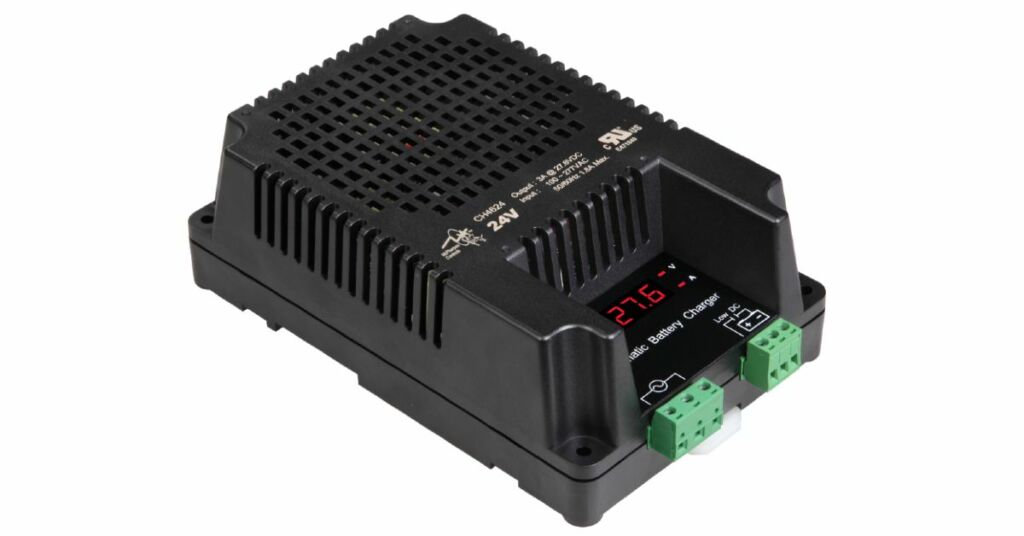
Key features of a power generator battery charger may vary depending on the specific model or brand. However, here are some common features to look for:
1. Charging Voltage and Current Adjustability: The charger should have adjustable charging voltage and current settings to provide the appropriate charging levels for different types and capacities of batteries. This allows for optimal charging and prevents overcharging or undercharging.
2. Multiple Charging Modes: A charger that offers multiple charging modes, such as trickle charge, fast charge, or maintenance charge, provides flexibility based on battery condition and charging requirements. This allows for efficient and customized charging.
3. Intelligent Charging: Some chargers have built-in microprocessors or advanced charging algorithms that monitor the battery’s charge level and adjust the charging parameters accordingly. This intelligent charging feature helps prevent overcharging and ensures the battery is charged optimally.
4. Safety Features: A good charger should include safety features to protect the battery and the charging process. These may include features like short-circuit protection, reverse polarity protection, temperature compensation, and voltage monitoring to prevent damage and ensure safe charging.
5. Battery Compatibility: Ensure that the charger is compatible with the type and capacity of the battery used in the power generator. Some chargers are designed specifically for certain types of batteries, such as lead acid, lithium-ion, or gel batteries, while others may have broader compatibility.
6. Automatic Shutdown: A charger with an automatic shutdown feature will stop charging once the battery reaches its full charge, preventing overcharging and damage to the battery.
7. Diagnostic and Maintenance Features: Advanced chargers may offer additional features such as battery diagnostics to assess battery health, desulfation function to remove sulfation buildup on lead-acid batteries, and equalization charging to balance cell voltage on multiple-cell batteries.
8. Durability and Build Quality: Consider the durability and build quality of the charger. Look for features such as rugged construction, heat resistance, and protection against dust and moisture, especially for chargers designed for outdoor or harsh environments.
9. User-Friendly Design: An easy-to-use interface, clear LED indicators or display, and intuitive controls make it simple to operate and monitor the charging process.
10. Portability and Connectivity: If the charger needs to be moved between different locations or generators, consider its portability. Look for features like a compact size, carrying handle, and easy connection options, such as alligator clips or quick-connect terminals.
Types of Generator Battery Chargers
There are several types of power generator battery chargers available on the market. The choice of charger depends on factors such as the type and capacity of the battery, the charging requirements, and the specific needs of the generator. Here are some common types of power generator battery chargers:
1. Automatic Float Chargers: These chargers are designed to provide a continuous low-level charge to the battery, commonly referred to as a float charge. They continuously monitor the battery voltage and adjust the charging voltage accordingly to maintain the battery’s charge level. Float chargers are ideal for applications where the battery is constantly connected to the charger, such as standby generators.
2. Microprocessor-Controlled Chargers: These chargers use advanced microprocessor technology to monitor and control the charging process. They typically provide multiple charging modes, automatic voltage adjustment, and features like diagnostics, desulfation, and equalization charging for optimal battery performance. Microprocessor-controlled chargers offer greater flexibility and customization in charging compared to simpler chargers.
3. Multiple-Stage Chargers: Multiple-stage chargers, also known as smart chargers, use a multi-step charging process to ensure efficient and thorough charging of the battery. They typically have three stages: bulk charging, absorption charging, and float charging. The bulk charging stage provides a high current to quickly charge the battery, the absorption stage delivers a lower current to top off the charge, and the float stage maintains the battery at a full charge. Multiple-stage chargers are efficient and designed to prevent overcharging and undercharging.
4. Pulse Chargers: Pulse chargers use a pulsating current to charge the battery. This pulsating current breaks down any build-up of lead sulfate crystals on the battery plates, known as sulfation. This helps to restore battery capacity and extend battery life. Pulse chargers are effective in rejuvenating older or sulfated batteries.
5. Manual Chargers: Manual chargers require manual adjustment and monitoring of charging voltage and current. These simpler chargers typically come with selectable charging voltages and current levels, allowing users to manually adjust the charging process according to the battery’s needs.
6. Trickle Chargers: Trickle chargers provide a low-level constant charge to a battery. They are used to slowly charge a battery over an extended period, typically for maintenance purposes. Trickle chargers are useful for keeping batteries charged during periods of inactivity or storage.
It’s important to consider the specific charging requirements and compatibility with the battery type when selecting a generator battery charger. Additionally, some chargers may offer a combination of features, such as a multiple-stage charger with microprocessor control for example. Reviewing product specifications and user reviews can help determine the most suitable type of charger for your power generator battery.
Selection Factors for a Generator Battery Charger
When selecting a power generator battery charger, there are several factors to consider to ensure it meets your needs and is compatible with your battery and generator system. Here are some key selection factors to consider:
1. Battery Type and Capacity: Determine the type and capacity of your generator’s battery. Different battery types, such as lead-acid or lithium-ion, have specific charging requirements. Ensure that the charger you choose is compatible with your battery type and can provide the appropriate charge voltage and current for your battery’s capacity.
2. Charging Speed: Consider how quickly you need the generator battery to be charged. Some chargers offer faster charging rates or multiple charging modes to accommodate different charging time requirements. For example, if you frequently use the generator and need a quick recharge between uses, a charger with a fast charging mode may be beneficial.
3. Charging Method: Determine the charging method that suits your needs. Some chargers connect directly to the generator’s electrical system, while others may require an external power source. Additionally, there are solar-powered chargers that use solar panels to charge the battery, suitable for off-grid or portable generator applications.
4. Charging Efficiency: Look for a charger that offers high charging efficiency. A charger with advanced charging algorithms or intelligent charging features can optimize the charging process and minimize energy waste. Higher charging efficiency means faster and more effective charging, which can be beneficial for frequent generator usage or during emergency situations.
5. Safety Features: Ensure that the charger has built-in safety features to protect both the battery and the charging process. Look for features such as short-circuit protection, reverse polarity protection, temperature compensation, and overcharge protection. These safety features help prevent damage to the battery and ensure safe and reliable charging.
6. Durability and Build Quality: Consider the durability and build quality of the charger. Look for chargers that are sturdy, well-constructed, and designed to withstand the conditions in which they will be used. This is particularly important if the charger will be used in outdoor or harsh environments.
7. User-Friendly Design: Look for a charger with an intuitive interface and user-friendly controls. LED indicators, digital displays, or clear indicators can help monitor the charging process and battery status easily. The charger should also have a design that allows for easy connection and disconnection to the battery.
8. Brand Reputation and Reviews: Consider the reputation and reviews of the charger and the manufacturer. Research customer experiences and feedback on the charger’s performance, reliability, and customer support. A reputable brand with positive reviews can provide more assurance of a quality charger that meets your requirements.
9. Budget: Determine your budget for the charger. Chargers can vary significantly in price depending on features, brand, and quality. Set a budget and look for chargers that offer a balance between affordability and the necessary features for your specific needs.
Remember to refer to the generator’s specifications and consult with the manufacturer or a trusted professional to ensure compatibility and select the right charger for your power generator battery.
We have seen in this post that a power generator battery charger is essential for maintaining the readiness, performance, and longevity of the generator’s battery. It ensures that the battery remains charged and reliable, extends the battery’s lifespan, improves the generator’s performance, and provides safety and protection. Using a proper battery charger helps optimize the functionality and effectiveness of a power generator system. Having your generator’s battery always available ensures that when you need full availability your generator is there to serve you.
Don’t hesitate to reach out for any further information or assistance regarding to power generator battery chargers. Contact us at the phone number +1.954.657.7777, or write to us at info@bnhgenerators.com, and we will gladly help you.


